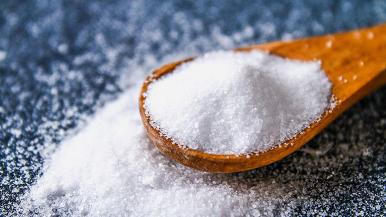People across the globe are consuming much more sodium than they should. And based on current recommendations, Americans shouldn’t be having more than 2,300 milligrams of sodium each day. Instead, they’re consuming closer to 3,400.
Sodium is an essential nutrient that helps regulate the amount of water and minerals in the body and is essential for cellular function. But too much of it can cause some serious health complications. It can increase your risk of heart disease. It also raises blood pressure, a key driver of strokes and heart attacks.
Eating at home helps
That 2,300-milligram daily target equates to just a teaspoon of salt. It’s more than enough for most home cooks, but it’s easily disguised in processed foods. According to the FDA, Americans eat about a third of their food calories and spend half of their food dollars outside the home.
“Trying to steer away from processed foods and more toward cooking vegetables in your house is the most effective way at shifting a salt-packed, saturated-fat-packed unhealthy diet to more of a nutritious, low-salt, high-potassium diet,” says Rush cardiologist Daniel Luger, MD.
Common foods like deli-meat sandwiches, pizza, soups, savory snacks, pasta dishes, burgers, burritos and tacos all contribute significantly to sodium intake. Instead of eliminating these foods entirely, Luger recommends a broader approach to re-evaluating the foods you eat.
“I think it’s a little bit misleading to identify one food product and say, ‘This is the culprit,’” Luger says. “It’s really any food prepared outside of the house. Try to eat most of your meals in the house where you know there’s a controlled amount of sodium.”
Challenges for underserved areas
Access is a major hurdle to reducing sodium intake. People living in underserved communities may not have access to fresh produce — forcing them to rely on canned, highly processed foods to feed themselves and their families. Reliance on packaged and processed foods is a contributing factor to the dramatic difference in life expectancy for Chicagoans living in West Garfield Park and other West Side neighborhoods, compared to their neighbors to the north and east.
“My strategy for nutrition and preventing cardiovascular disease is based on the premise that people have access and the ability to pay for healthy, organic, fresh produce. And that’s not available to a lot of people in the underserved areas of Chicago,” Luger said. “I think that can be combated not just by increased resources in those areas, but also by improving education around nutrition.
In an attempt to lower the amount of sodium carried in processed foods, the FDA recently proposed a new rule that would use salt substitutes in certain foods. It would impact more than 20 items, including cheese, frozen peas, cereal flour and canned tuna.
Next steps for cutting sodium
How do you start making healthier decisions? It comes down to what you eat and when you eat it.
Preparing meals at home using fresher ingredients like fruits, vegetables, beans, lentils and lean animal protein is a great place to start. Luger recommends plant-based or Mediterranean-style diets for the best cardiovascular outcomes. In addition to limiting sodium, limiting sugar intake from sodas and juices, and avoiding processed meats and other foods like store-bought cakes and cookies is also beneficial to your health Eating less sugar contributes to a healthy gut and improves mood, sleep and energy.
Eating a complete breakfast will help fuel your body and will get burned off as you go about your day. Avoid large dinners and late-night snacking, since those foods don’t get burned off and may be stored as fat.
These changes aren’t meant to be made immediately and all at once. Luger recommends doing what feels best for you and your body and consulting with your physician before implementing any significant lifestyle changes.
Daniel Luger, MD, is a cardiologist at RUSH Center for Prevention of Cardiovascular Disease.




